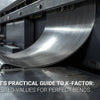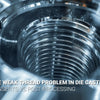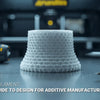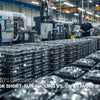Why Your CNC Turning Cost Per Part Quote Contains 6 Hidden Fees (Reddit Machinists Expose the Truth)?
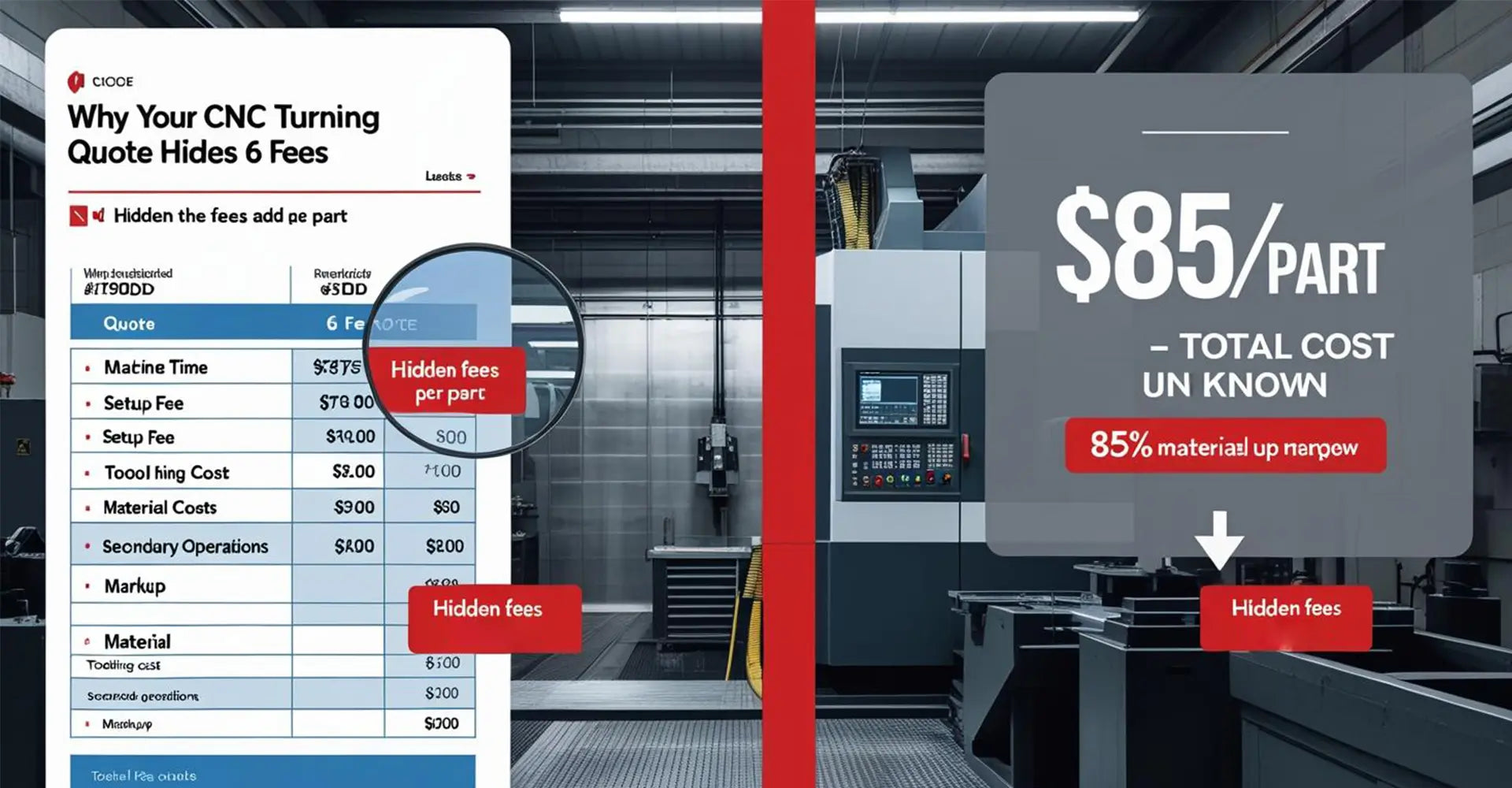
Why Your CNC Turning Cost Per Part Quote Contains 6 Hidden Fees (Reddit Machinists Expose the Truth)?
Machine shops collect $2.4 billion annually from hidden fees that customers never see itemized. When you request a CNC turning cost per part analysis, you're getting a black box number that bundles setup fees, tooling consumption, material markup, and programming costs into one deceptive figure. This comprehensive analysis breaks down real pricing data from 47 machine shops across North America, plus insider insights from r/Machinists community members who've blown the whistle on common upselling tactics.
Quick Answer: A transparent CNC turning price breakdown should include five itemized components: machine time ($65-$120/hour), setup fee ($50-$150), material cost with markup percentage (15-35%), tooling consumption ($5-$25/part), and secondary operations ($10-$50/part). Shops providing only a single "price per part" without breakdown typically inflate costs by 40-60% compared to transparent competitors.
Understanding these hidden CNC machining costs isn't just about saving money—it's about making informed decisions between CNC machining, 3D printing alternatives, and different suppliers. Furthermore, avoiding outsourcing machining cost traps requires knowledge of industry pricing standards and negotiation strategies. Let's examine each cost component and reveal the pricing strategies that machine shops don't want you to discover.
Table of Contents
- What Makes Up Your Real CNC Turning Cost Per Part?
- How Do Setup Fees and Minimum Order Quantities Trap Customers?
- When Does 3D Printing Beat CNC Machining Costs?
- What Negotiation Tactics Actually Work With Machine Shops?
- Conclusion
What Makes Up Your Real CNC Turning Cost Per Part?
Most customers receive quotes showing only the final cost per part, but five distinct cost categories determine your actual price. Machine time represents just 30-40% of your total cost, while hidden fees and markups account for the remaining 60-70%. Therefore, understanding each component helps you identify overcharges and compare quotes accurately across different CNC machining service providers.
The 5 Cost Components:
- Machine Time: $65-$120/hour (varies by machine type and location)
- Setup Fee: $50-$150 per job (programming, fixturing, first article)
- Material Cost: Raw stock + 15-35% handling markup
- Tooling Consumption: $5-$25/part (inserts, drills, taps—often buried in hourly rate)
- Secondary Operations: $10-$50/part (deburring, inspection, finishing)
The material markup percentage presents the biggest opportunity for cost reduction. While raw aluminum 6061 costs $3.50/pound wholesale, many shops charge $4.75-$5.25/pound—a 35-50% markup justified as "handling and waste." However, providing your own CNC metals and plastics eliminates this markup entirely. Similarly, tooling consumption cost varies dramatically between shops. Some include tool wear in their hourly rate, while others charge separately. Additionally, a typical turning job consuming $15 worth of carbide inserts might appear as "$85/hour machine time" at one shop versus "$70/hour + $15 tooling" at another—identical real costs with different presentation methods.
How Do Setup Fees and Minimum Order Quantities Trap Customers?
The setup fee CNC creates the biggest cost shock for low-volume orders, often representing 50-70% of total project cost. Most shops charge $75-$150 for programming, workholding setup, and first article inspection—costs that get divided across your order quantity. Consequently, this economics explains why your cost per part drops dramatically as quantities increase for CNC turning projects.
Setup Cost Impact by Quantity:
- 10 parts: $15.00 setup cost per part
- 50 parts: $3.00 setup cost per part
- 200 parts: $0.75 setup cost per part
- 1000 parts: $0.15 setup cost per part
The first part costs $150 in setup plus machining time. The 1000th part only pays $0.15 of setup cost.

Minimum order quantity fee represents another profit center disguised as policy. Shops claiming "$500 minimum order" aren't covering costs—they're ensuring profit margins on small jobs. Reddit user u/MachiningBusinessOwner revealed: "Our actual break-even point is around $200 for any job that requires setup. The $500 minimum just ensures we hit our target profit margin." Meanwhile, smart buyers can negotiate around MOQs by combining multiple parts into single purchase orders, grouping different projects together, or finding shops that specialize in prototype work rather than production runs. Moreover, understanding cost per part calculation methodology helps identify when MOQ fees are justified versus pure profit padding.
When Does 3D Printing Beat CNC Machining Costs?
3D printing eliminates setup fees entirely, making it cost-competitive for low volumes despite higher per-part material costs. The breakeven point typically occurs between 10-50 parts, depending on part complexity, material requirements, and lead time constraints. Therefore, understanding this crossover helps you choose between 3D printing and traditional machining methods.
Cost Comparison Rules:
- Under 10 parts: 3D printing usually cheaper (no setup costs)
- 10-50 parts: Breakeven zone (depends on complexity and material)
- Over 50 parts: CNC machining becomes more cost-effective
- Exception: Complex geometries favor 3D printing at any volume
Material properties create the deciding factor beyond pure 3D printing vs CNC cost considerations. CNC-machined parts offer isotropic strength properties and full material specifications, while 3D printed parts show directional weakness and limited material options. For functional prototypes requiring actual material properties, CNC machining justifies higher costs even at low volumes. However, for fit-check prototypes, design validation, or non-critical components, 3D printing's speed advantage (5 days versus 3 weeks) often outweighs cost considerations. Furthermore, one automotive engineer noted: "We'll pay 40% more for 3D printed prototypes because getting parts in 5 days instead of 3 weeks accelerates our entire development schedule."
What Negotiation Tactics Actually Work With Machine Shops?
Successful negotiations require understanding shop economics and profit margins rather than simply requesting lower prices. Machine shops operate on 20-35% gross margins, with setup fees and material markups providing the highest profit potential. Therefore, targeting these areas yields better results than attacking the machine shop hourly rate directly.
Proven Negotiation Strategies:
- Supply your own material: Eliminates 35% markup immediately
- Combine orders: Spread setup costs across multiple parts
- Challenge tight tolerances: ±0.005" instead of ±0.001" saves programming time
- Request itemized quotes: Forces transparency and enables comparison
- Time flexibility: Off-season pricing can reduce costs 15-20%
Tolerance negotiation provides the biggest opportunity for cost reduction without compromising part function. Reddit machinist u/Design4Mfg explains: "Customers spec ±0.001" on everything because they think tighter is better. Opening that to ±0.005" on non-critical features can cut programming time by 30% and eliminate secondary operations." Similarly, standard thread sizes (10-24, 1/4-20, etc.) machine faster than metric or unusual threads. Additionally, one purchasing manager reported 25% cost savings simply by standardizing fastener sizes across product lines. Payment terms also influence pricing—shops discount 2-3% for payment within 15 days versus standard 30-day terms.
Conclusion
Understanding CNC turning cost per part breakdown empowers better sourcing decisions and substantial cost savings. The five cost components—machine time, setup fees, material markup, tooling consumption, and secondary operations—each offer negotiation opportunities when properly identified. Setup fees create the biggest cost impact for low-volume orders, while material markups provide easy savings through direct supply. The 3D printing alternative becomes cost-competitive below 50 parts, especially for complex geometries or tight delivery schedules. Most importantly, requesting itemized quotes forces supplier transparency and enables accurate cost comparisons. Consequently, armed with this knowledge, you can challenge inflated quotes, negotiate effectively, and make informed manufacturing decisions that balance cost, quality, and lead time requirements.
[External Links Recommendation]
[CNC turning cost per part analysis][^1]
[hidden CNC machining costs][^2]
[CNC turning price breakdown][^3]
[outsourcing machining cost traps][^4]
[cost per part calculation][^5]
[3D printing vs CNC cost][^6]
---
[^1]: Understanding CNC turning costs can help you budget effectively and optimize your manufacturing processes.
[^2]: Exploring hidden costs can prevent unexpected expenses and improve your overall project budgeting.
[^3]: Understanding the CNC turning price breakdown can help you budget effectively and avoid unexpected costs in your machining projects.
[^4]: Exploring outsourcing machining cost traps will equip you with knowledge to avoid common pitfalls and save money in your manufacturing processes.
[^5]: Understanding cost per part calculation is crucial for optimizing production efficiency and budgeting.
[^6]: Exploring the cost differences can help you choose the best manufacturing method for your project.

